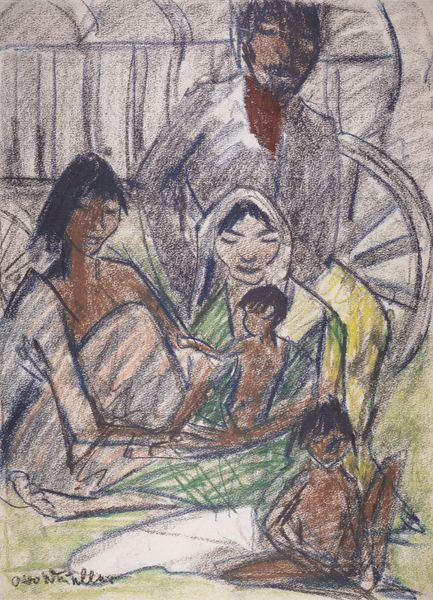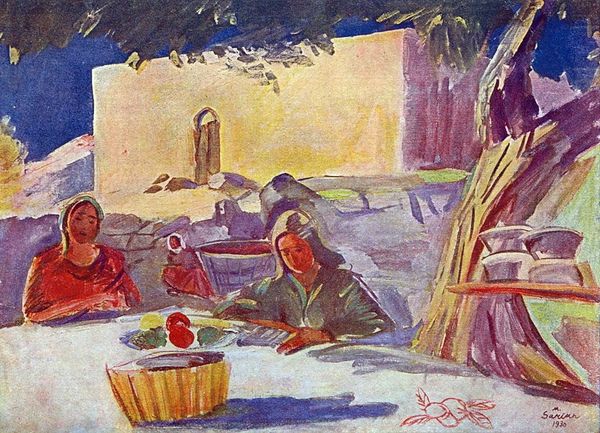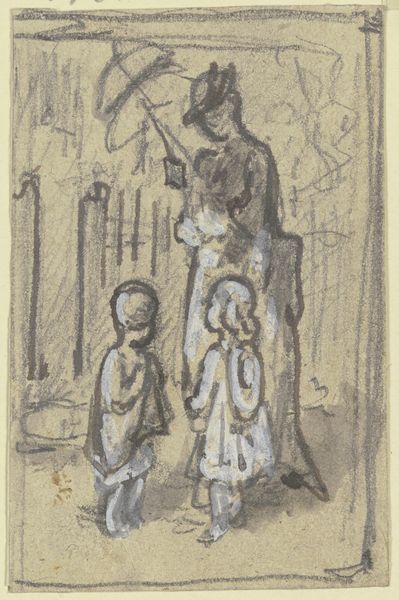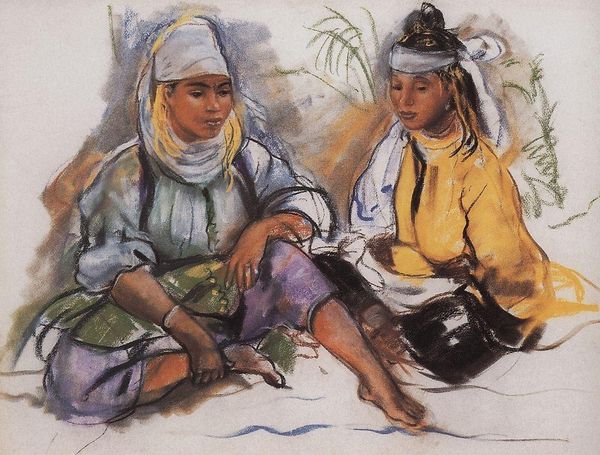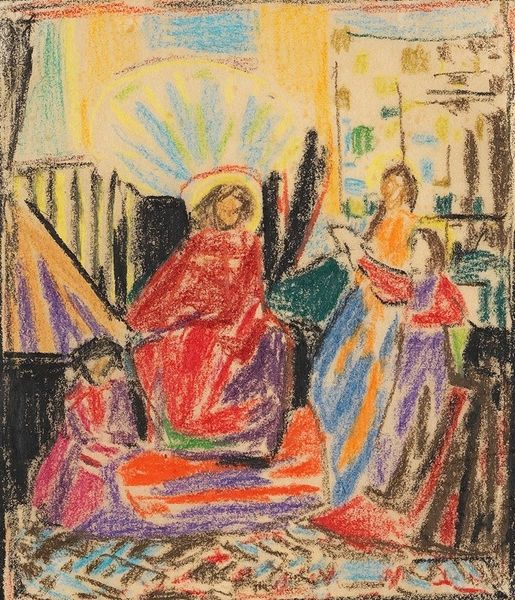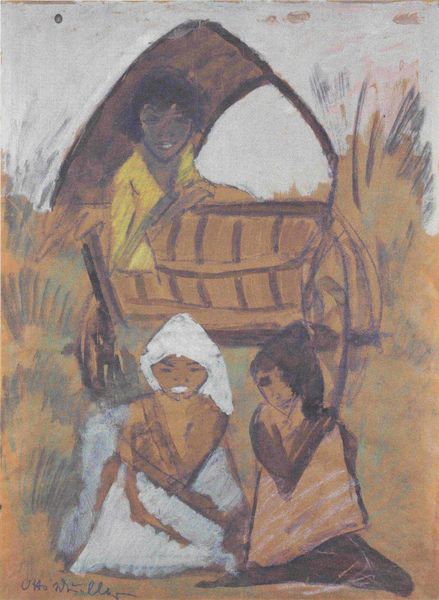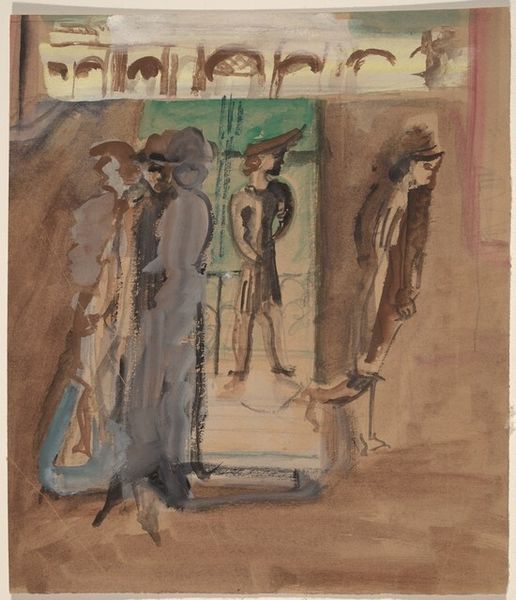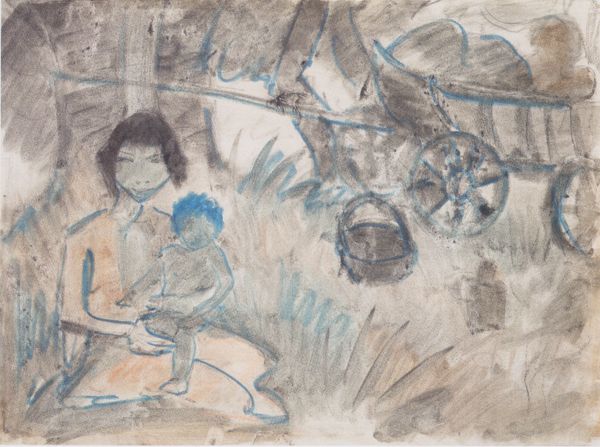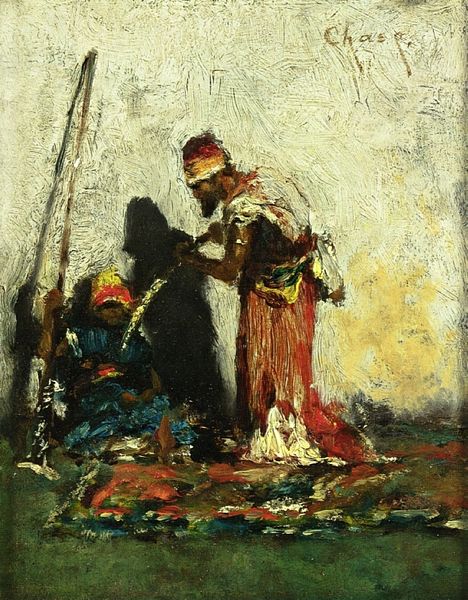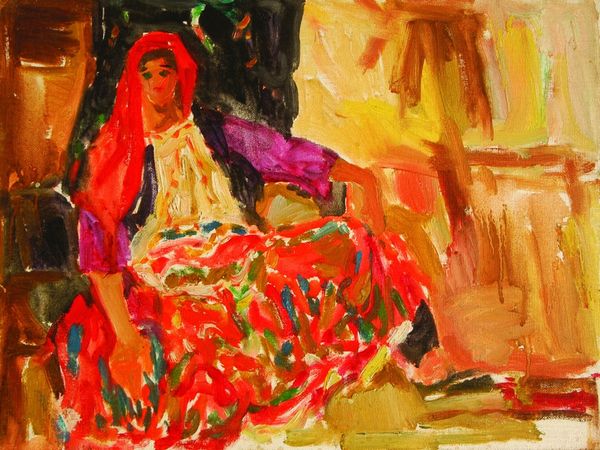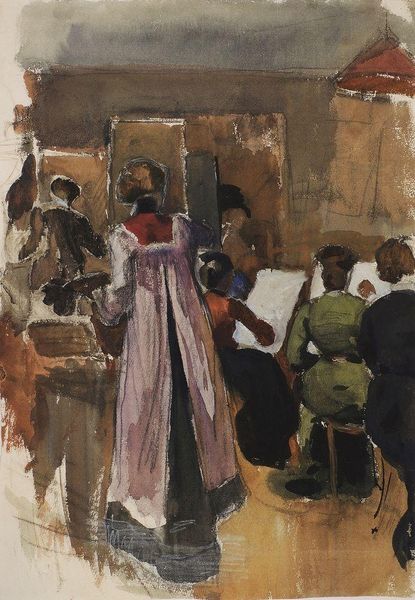
drawing, pastel
#
portrait
#
drawing
#
figuration
#
oil painting
#
child
#
coloured pencil
#
genre-painting
#
pastel
#
watercolor
Copyright: Zinaida Serebriakova,Fair Use
Curator: This is "Patio" by Zinaida Serebriakova, created in 1928. Editor: There's a beautiful informality to this drawing. The use of pastel or colored pencil lends it a softness, even amidst the structural setting of the patio. It captures a fleeting moment, a slice of daily life. Curator: It is a slice of life, a view of children in what appears to be a domestic space, likely painted during Serebriakova's travels. We can consider it a form of genre painting imbued with symbolic weight. Children often represented innocence, and the setting of a patio carries connotations of protection and refuge. The architecture almost frames their existence. Editor: I'm drawn to the composition. See how the various lines, forms, and planes articulate the architecture while organizing the artist’s impression? There’s a teaset on the lower left that gives us clues about ritual, too. Pastel and colored pencil would lend itself nicely to quick sketches capturing the fleeting activity in the scene. I wonder about Serebriakova's technique. Curator: Indeed. Those elements—the teaset, the doorway—provide context. In visual language, tea ceremonies or sets carry cultural value related to family, society, and connection. Likewise, doorways are portals. So we're not merely seeing children in a patio. Editor: You’re pointing at how the domestic and the sacred intersect, perhaps. But in addition to that kind of narrative potential, there are actual social forces shaping the artwork’s composition and materials. What about Serebriakova’s role as a woman artist? The implications of travel to non-Western sites of creation? Curator: Precisely! It reminds us that symbols aren't static. "Patio," at a glance, seems like a simple snapshot. However, through Serebriakova’s particular choice of imagery—the framing device, the patio, the figures—we uncover the personal story. It becomes an opening into thinking about society, travel, family. Editor: Seeing it this way, you also start noticing things like the casual elegance of the tea set next to the bare feet of the children. Details like that help us reframe it, seeing the work as speaking from lived experience and a perspective outside idealized archetypes of femininity. Curator: This piece invites one into this sense of lived experience, it resonates across years and continents, suggesting a network of symbols connecting to our modern understandings of family and home. Editor: A quick sketch yields layers upon layers for the viewer! That tension is interesting, to realize something spontaneous comes from such a long period of practice.
Comments
No comments
Be the first to comment and join the conversation on the ultimate creative platform.
